The Famous CIA Inverts
In 1985, news of a newly discovered US invert stamp rocked the philatelic world. Invert stamps are some of the most valuable and sought-after stamps in the world. It was the first major inverted stamp in over 65 years and said to be rarer than the coveted Jenny inverts. But the details were cloaked in secrecy, hidden in a maze of deception that took nearly two years to unravel.
One of the Most Fascinating Stamp Stories of the 20th Century
The story began when an auctioneer specializing in US error stamps announced the discovery of 85 inverted 1979 $1 Rush Lamp stamps. The stamps had been discovered by a “business in northern Virginia” and the finder wished to remain anonymous. The Bureau of Engraving and Printing launched an internal investigation and found that there were no indications of intentional wrongdoing by its employees.
Then in 1986, Mystic Stamp Company and two other investors acquired 50 $1 Candleholder Invert Error stamps. Curious about the origin of these stamps with their candleholder and lettering printed upside down, Mystic’s president, Don Sundman, submitted a Freedom of Information Request with the Bureau of Engraving and Printing. Little did he know then that what he uncovered would lead to the biggest stamp story in years – one that would make the front page of the New York Times, Washington Post, Wall Street Journal, and many other news media across the country!
Don Uncovers CIA Involvement
When the report finally arrived, it was accompanied by a cover letter – from the Central Intelligence Agency! Names were blocked out in the 35-page report, but Don Sundman was able gather enough information to trace the stamps back to the CIA.
Don learned that an on-duty CIA employee had purchased the partial sheet of 95 inverted stamps at a small post office near McLean, Virginia. When he and his co-workers realized what they had, they pooled their money and substituted non-error $1 Rush Lamp stamps for the inverts. Each of the nine co-workers kept a stamp. The remaining 86 stamps, including one that was damaged, were quietly sold to the auctioneer.
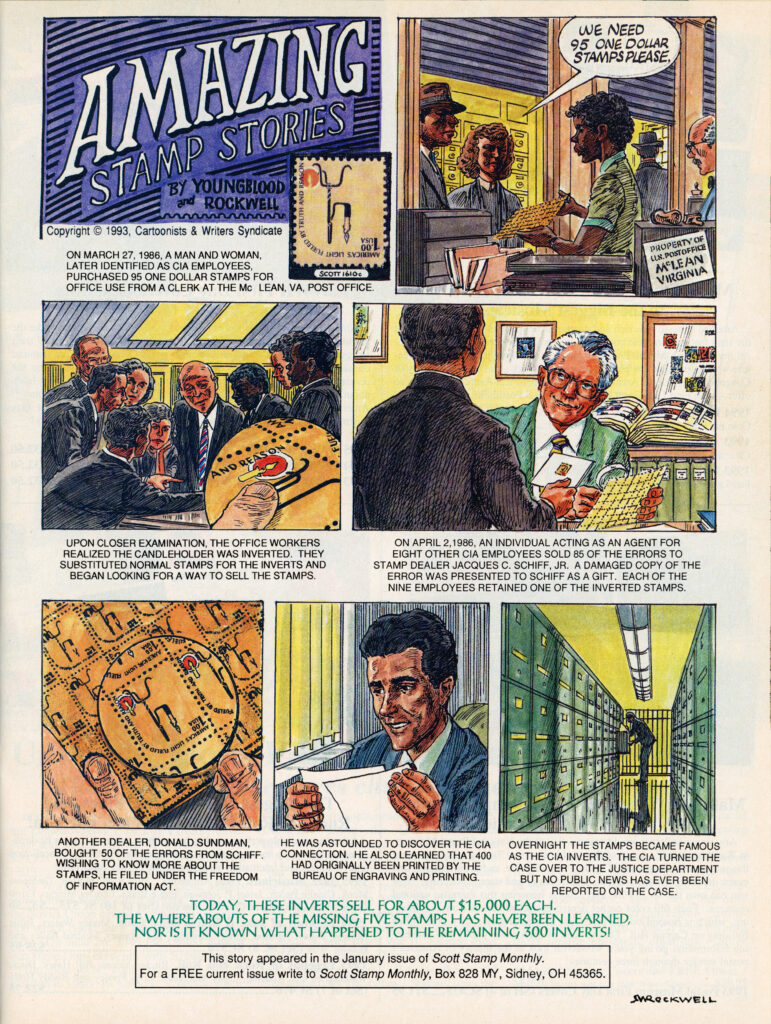
The discovery, which Don broke in Linn’s Stamp News uncovered the story of the nine employees and their actions. The story made headlines across the nation and was featured on every major television network, CBS radio, and even in Time magazine. CIA involvement made the story a feast for the imagination! It became known as the “Candleholder Invert Caper.”
As a result of Don’s inquiry, the CIA launched an ethics investigation and demanded the employees surrender their inverts or face 10 years in prison and a 10-year prison term for conversion of government property for personal gain. Four returned their stamp, one claimed to have lost it, three workers resigned, and one was fired. Ultimately, the Department of Justice declined to prosecute the co-workers. And the Bureau of Printing and Engraving’s internal investigation found no collusion on the part of its employees with the people who purchased the inverted stamps.
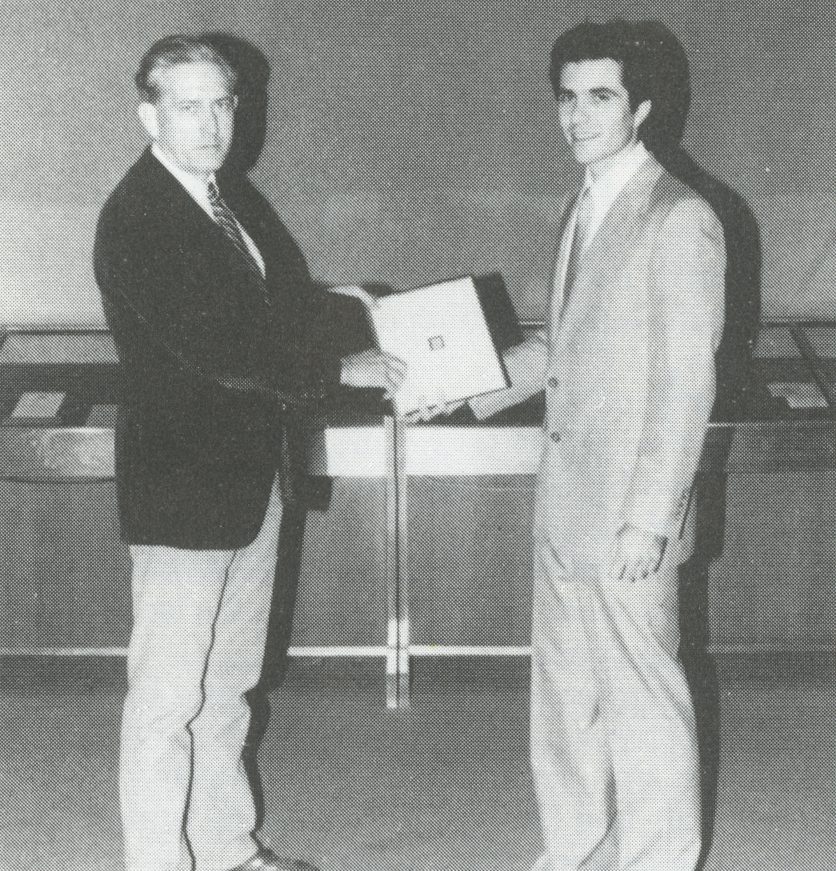
The CIA donated the recovered inverts to the National Postal Museum, where they joined a copy donated earlier by Mystic. Investigations conducted by the Bureau of Printing and Engraving and Justice Department cleared the co-workers of any wrongdoing.
Twenty years later, Stephen Lambert, the employee who purchased the sheet and later claimed to have lost his copy offered to sell the stamp to Mystic.
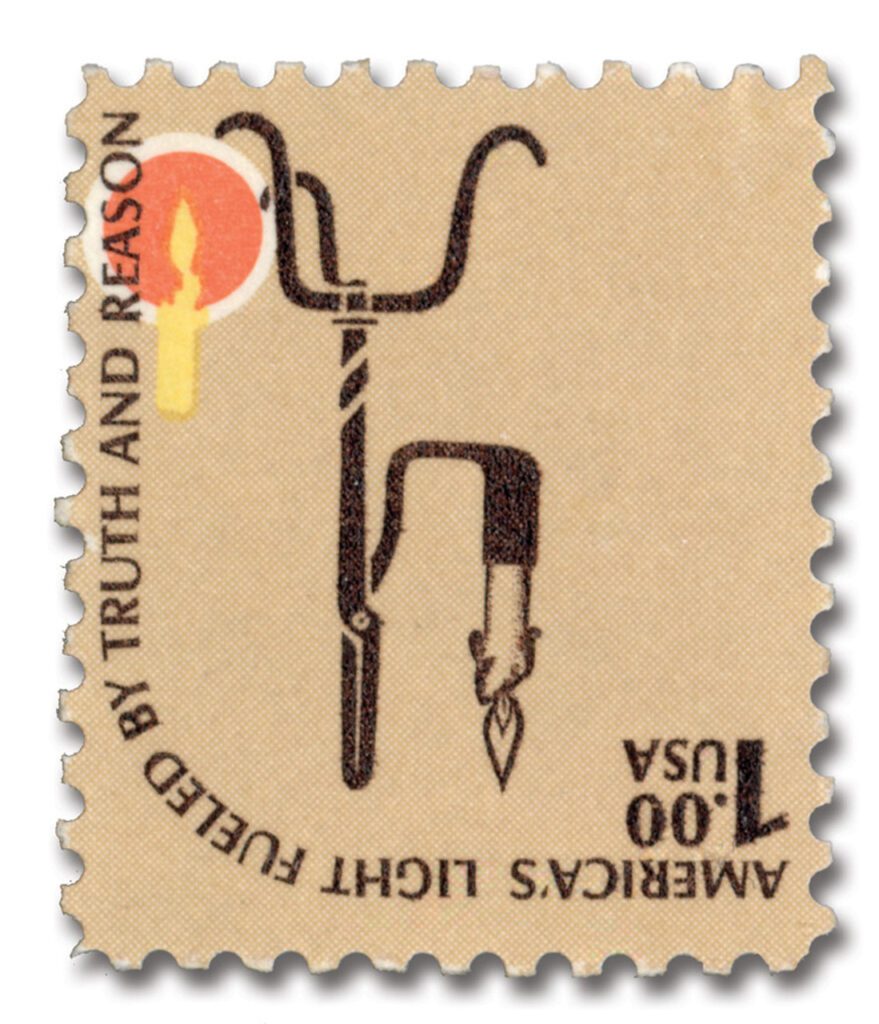
The CIA Invert Error was Created in an Odd and Unlikely Series of Events
The Candleholder stamp was printed on two separate printing presses in different buildings. Sheets came off the first press with the image of the printed flame face down, gum side up. The mill that manufactured the paper had been required to deliver it in rectangular sheets with a triangle cut off the bottom left corner. This allowed an inverted sheet to stick out and easily be caught by quality control… but after six years of printing the candlestick design, a batch of paper was delivered to the Bureau of Engraving and Printing without the bottom corner cut off. A bureau manager, who overstepped his authority, sought to save a little money by eliminating the process. The Bureau stated the sheet was “inadvertently reversed” by a BEP employee due to the lack of the corner cut.
This was the batch from which the error was printed and distributed to the public. The error sheet happened to be delivered to a post office near McLean, Virginia, leading to the rare error’s discovery by CIA employees. It’s only thanks to Mystic Stamp Company President Don Sundman’s filing of a Freedom of Information Act request with the Bureau of Engraving and Printing that this fascinating story is known today at all!

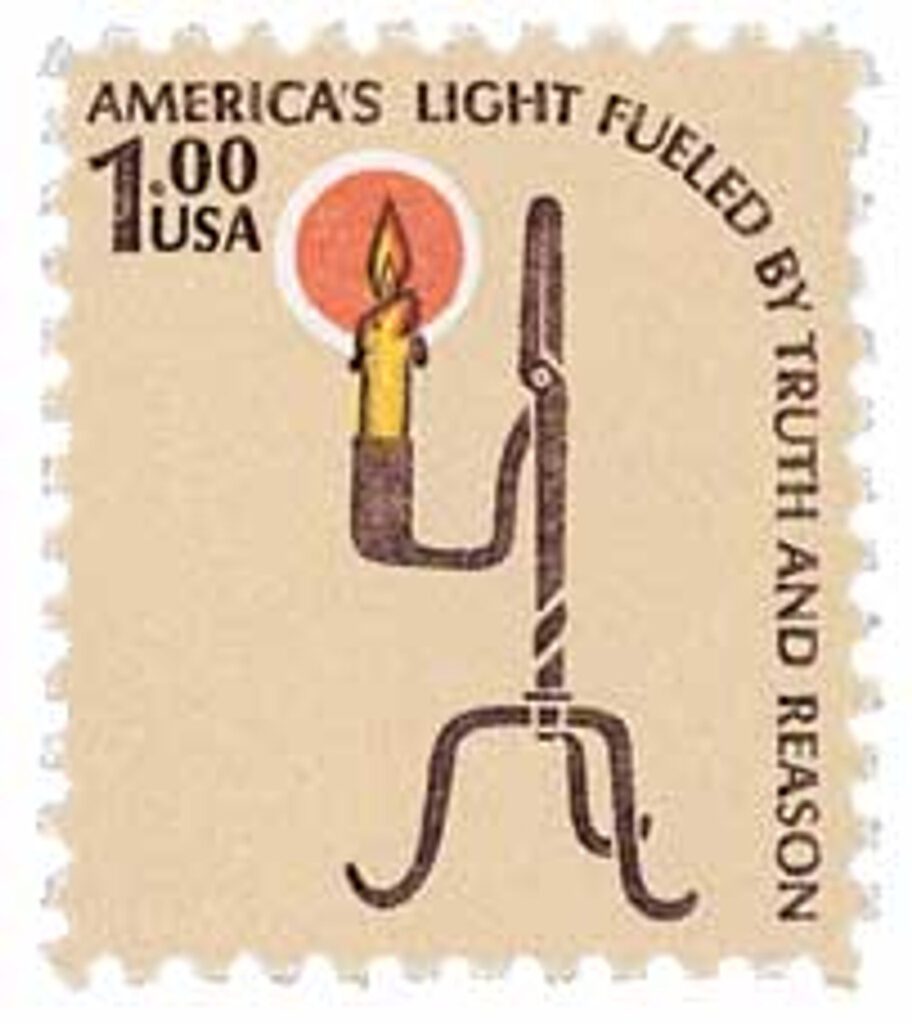
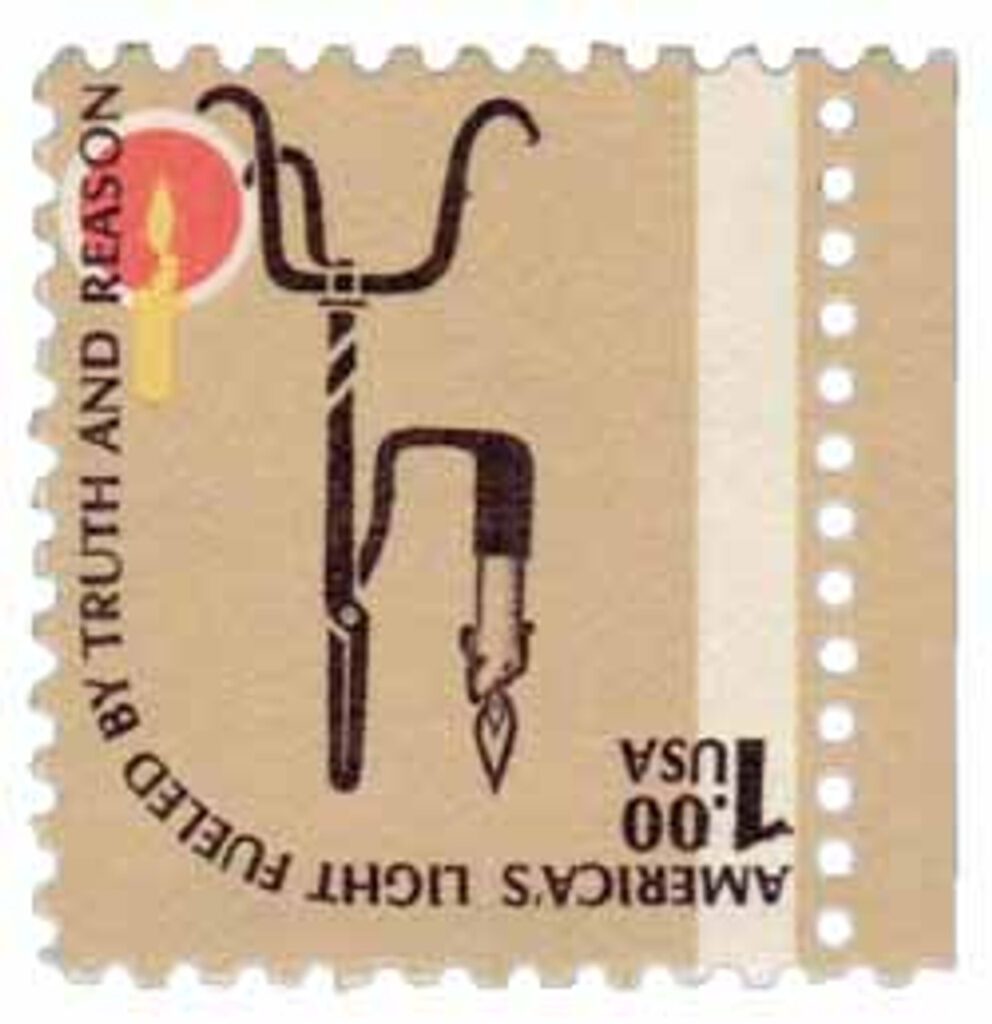
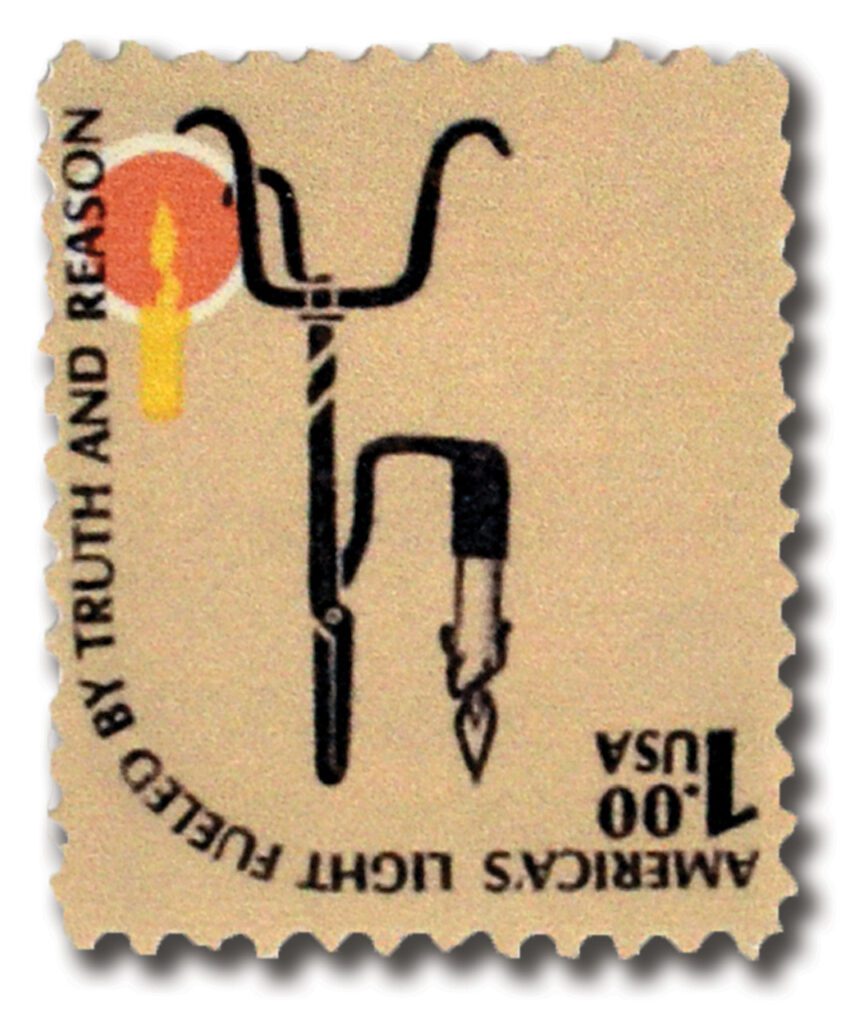
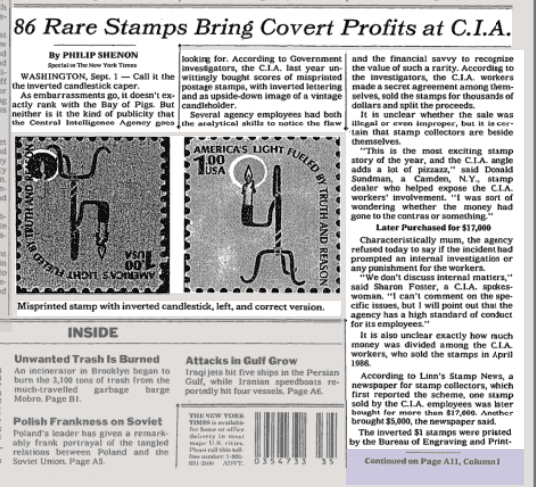
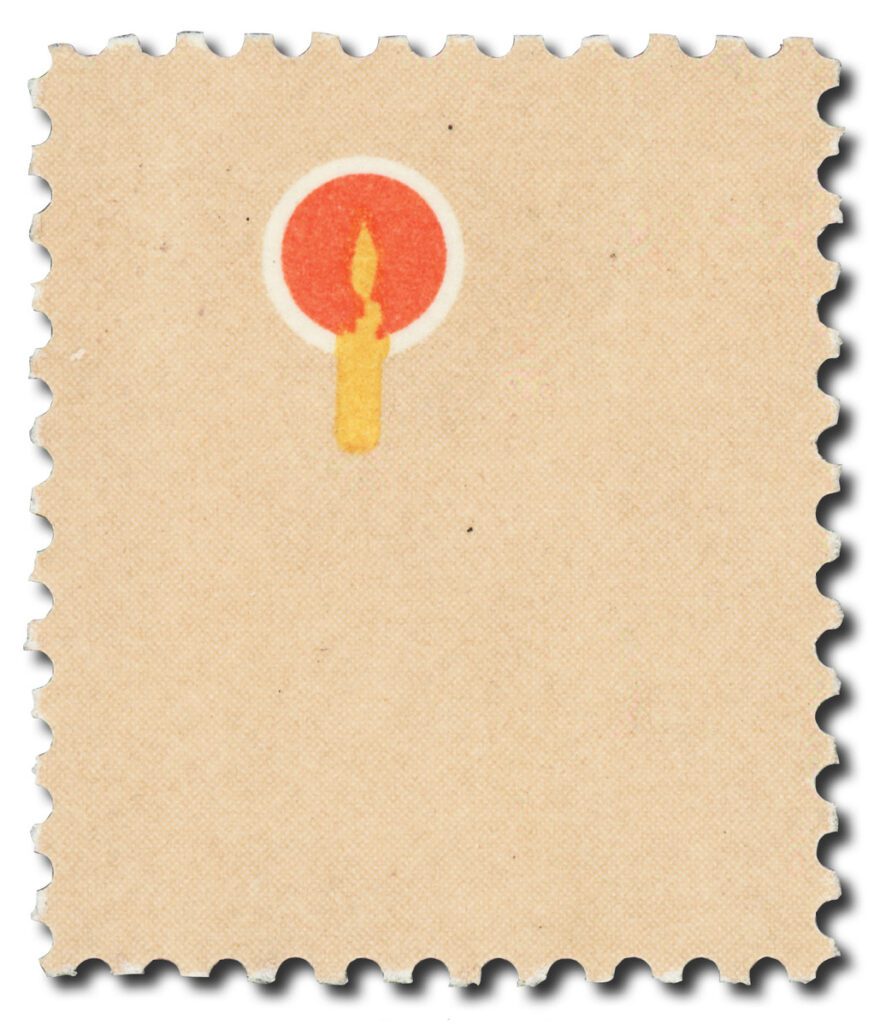
With careful scrutiny over the past twenty or more years, it appears to me that this stamp should be reclassified as a “Misplaced, inverted error”. I say this because, looking very carefully, if the candle, stand, and inscription were turned upright, the yellow candle and flame as well as the “glow” still would not be correctly orientated, “centered” over the candle in the stand. It would most likely be “covering” the “1.00 USA”. Please explain to me and others if this is not so.
The stamps were printed in sheets of 400 and one side of the paper had a ¼ inch (or so) wider margin than the other. So when the sheet was inverted for the 2nd printing, the flame didn’t line up with the candlestick. The flame is offset by about ¼ of an inch.
You can read more about the stamp in great detail, here: https://www.linns.com/news/us-stamps-postal-history/debunking-a-philatelic-conspiracy-theory-about-the-cia-invert